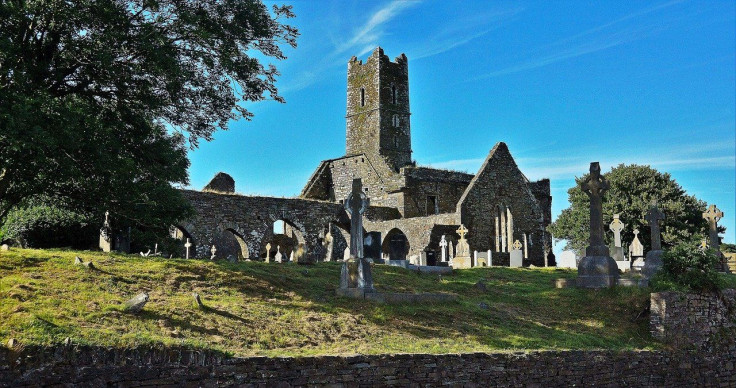Graffiti ‘Repelling Evil Spirits’ Discovered In Demolished Medieval Church
KEY POINTS
- Archaeologists discovered "witches" markings in the ruins of a medieval church
- The markings were possibly used to keep the evil spirits at bay
- The church exploration is part of the U.K.'s "largest archaeological program"
Archaeologists exploring the remains of a medieval church discovered odd markings and graffiti that might have been placed there to ward off witches and evil spirits.
St. Mary's church in a village, called Stoke Mandeville in Britain was already demolished in the 1860s but archaeologists working on the site found some five feet of the church actually survived the demolition. The finding, according to a statement from High Speed Two (HS2), became even more surprising, when they found two stones with some unusual carvings and graffiti.
"Historians consider these markings to be 'witches' marks, created to ward off evil spirits by entrapping them in an endless line or maze," the HS2 statement said, also noting that the markings could also have been used as a "scratch dial," which churches used to divide the day for the morning, midday and evening prayers.
HS2 archaeologists have uncovered #medieval graffiti and ‘witching’ marks, while excavating the remains of St Mary's Church, Stoke Mandeville. Some of the marks could also be interpreted as early sun dials too. Learn more about this #HS2 #archaeology: https://t.co/Q5iz0Y5cMM pic.twitter.com/T8Ck5Ei7lS
— HS2 Ltd (@HS2ltd) October 20, 2020
However, these scratch dials are typically placed close to the southern door, the statement explained. Since this was not the case in St. Mary, it's possible that the stones were actually used as witches marks or, perhaps they were really scratch dial stones that were simply reused for another part of the church.
In fact, the church did experience changes in its lifetime before it was demolished -- first being a chapel in 1070 and then being extended in the 1340s.
It's also not the first time that the markings have been recorded. Several other markings have also been found in some churches, homes, and even furniture, the statement said. But for now, exactly what they were used for in St. Mary's remains unclear. It does, however, provide an excellent insight into its history.
"The archaeology work being undertaken as part of the HS2 project is allowing us to reveal years of heritage and British history and share it with the world," HS2 lead archaeologist Michael Court said in the statement. "Discoveries such as these unusual markings have opened up discussions as to their purpose and usage, offering a fascinating insight into the past."
St. Mary church is actually just one of the archaeological sites that HS2 experts are working on. As part of Britain's plans to build a high-speed rail project, it also undertook the "largest archaeology program ever undertaken in the U.K."
Before placing the rails, over 1,000 archaeologists were working on exploring and recording over 60 archaeological sites that it will pass through, thus still preserving history.
So far, archaeologists on the project have made several major discoveries, including the remains of a murder victim from the Iron Age, two-time capsules that were buried some 140 years ago to mark the opening of U.K.'s first "sober hospital" and, even the long-lost remains of Captain Matthew Flinders, the Royal Navy explorer credited with giving Australia its name.

© Copyright IBTimes 2024. All rights reserved.






















